FIGHTING THE WAR AGAINST COLD
Strategies and Solutions for a World Under Siege
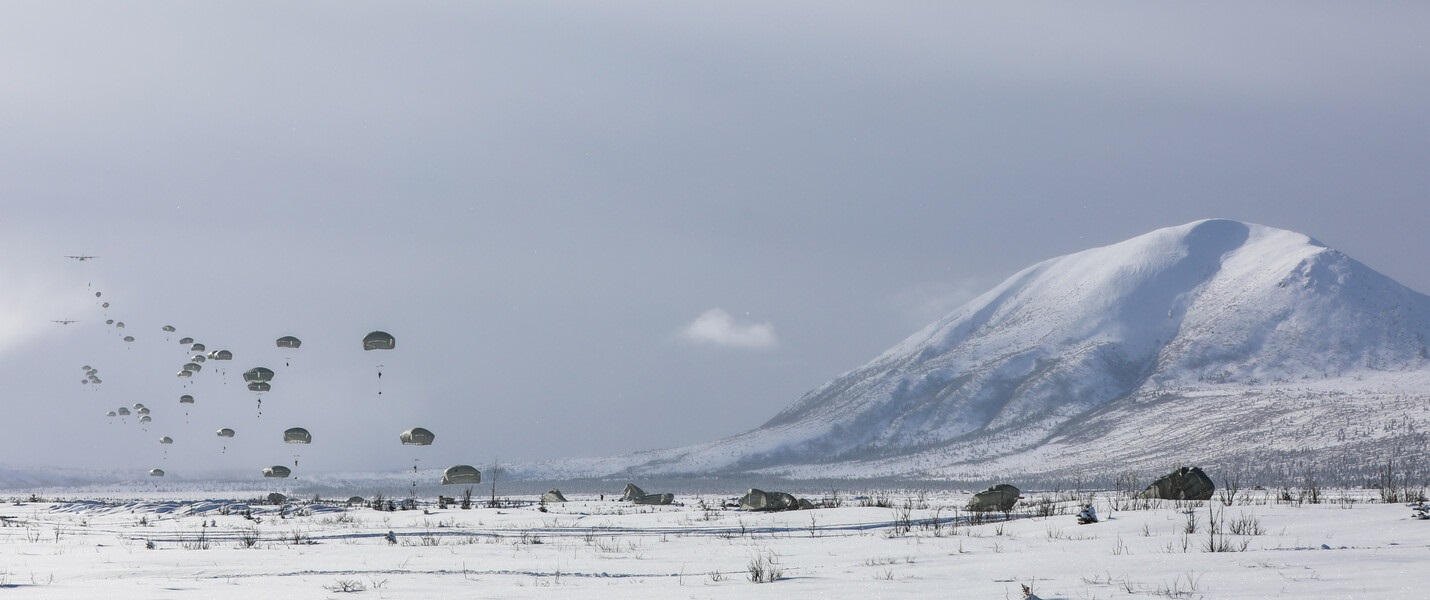
Soldiers of the 11th Airborne Division conduct a mass-tactical parachute operation in Alaska. Photo: US Army
The incursions of Chinese spy balloons over the Aleutian Islands and Alaskan mainland earlier this year put the spotlight back on the importance of Arctic security, and of the need for units and equipment that can operate effectively in extremely cold environments.
The security of the Arctic region has in fact become more of a strategic priority for the Department of Defense in recent years. The US Army published its “Regaining Arctic Dominance” strategy document in 2021, while the US Navy and Marine Corps released their joint strategy document "A Strategic Blueprint for the Arctic" in January 2020. Last year the Department of Defense established a dedicated “Arctic Strategy and Global Resilience Office”, and in October the White House released a “National Strategy for the Arctic Region”. All of these papers highlight the fact that the Arctic region as integral to the defense of the United States and several of our closest allies.
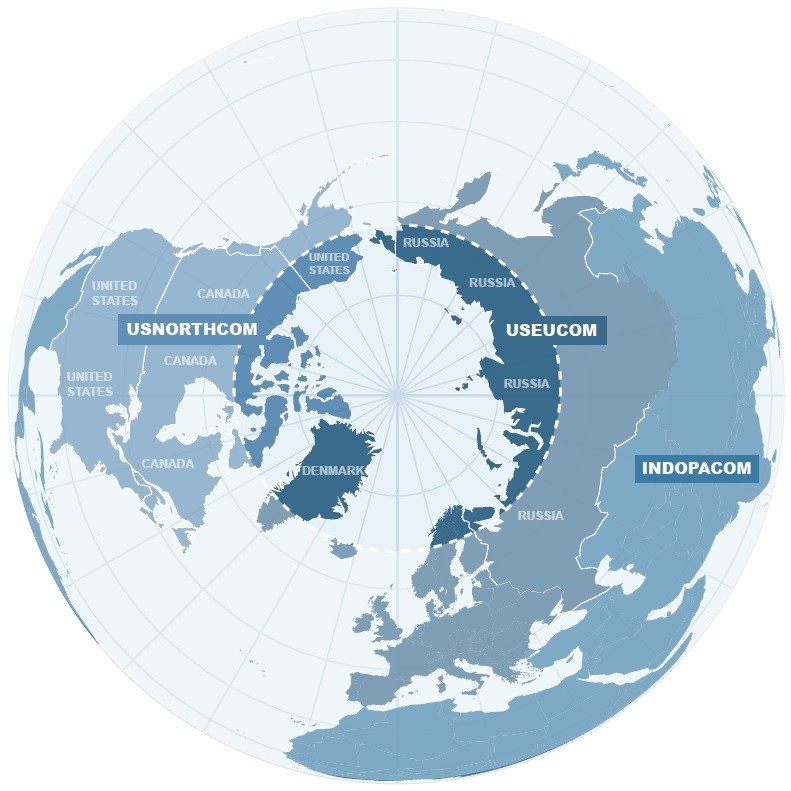
The Arctic region encompasses part of the areas of responsibility of three different geographic combatant commands (USNORTHCOM, USINDOPACOM, USEUCOM), eight countries, and all time zones. (Graphic: US Army)
As part of the renewed strategic importance being placed on Arctic security, the Army re-activated the historic 11th Airborne Division in June 2022, uniting approximately 12,000 soldiers at Fort Wainwright and Joint Base Elmendorf-Richardson. The division will serve as the Army’s leading Arctic warfare experts, focusing on mobility and the capabilities of sustained operation in the Arctic, and other extreme cold weather environments. The US Marine Corps has also begun to establish a more persistent, but not permanent, presence on NATO's northern flank through rotational training exercises in Norway.
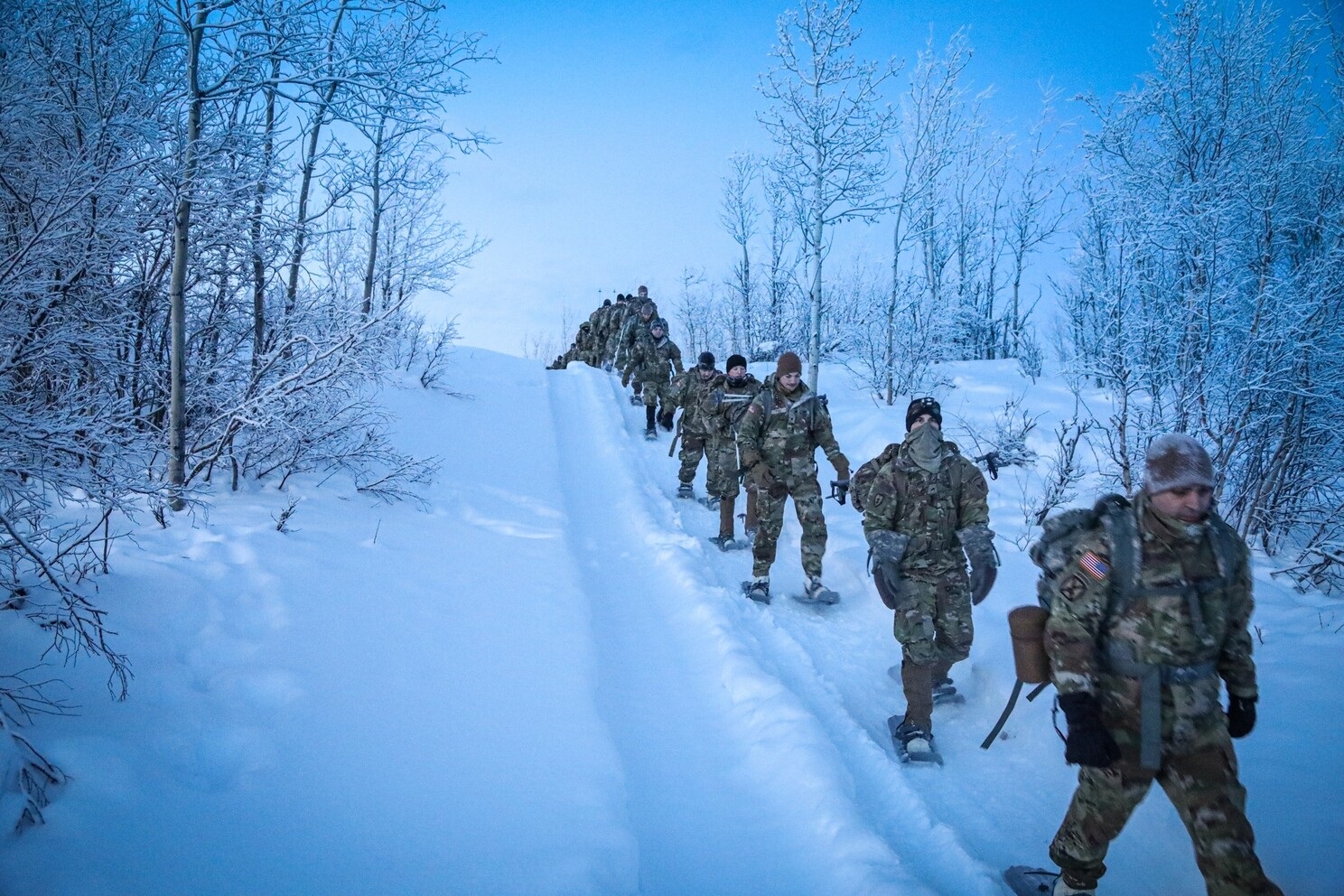
Soldiers of the 11th Airborne Division conduct an extreme cold weather foot movement during a human factors evaluation of the Cold Temperature and Arctic Protection System (CTAPS) in Alaska. (Photo: US Army)
As operations over the past 20-30 years have been primarily oriented around hot weather environments, the Army and Marine Corps are now investing in new clothing and equipment optimized for operations in extremely cold environments.
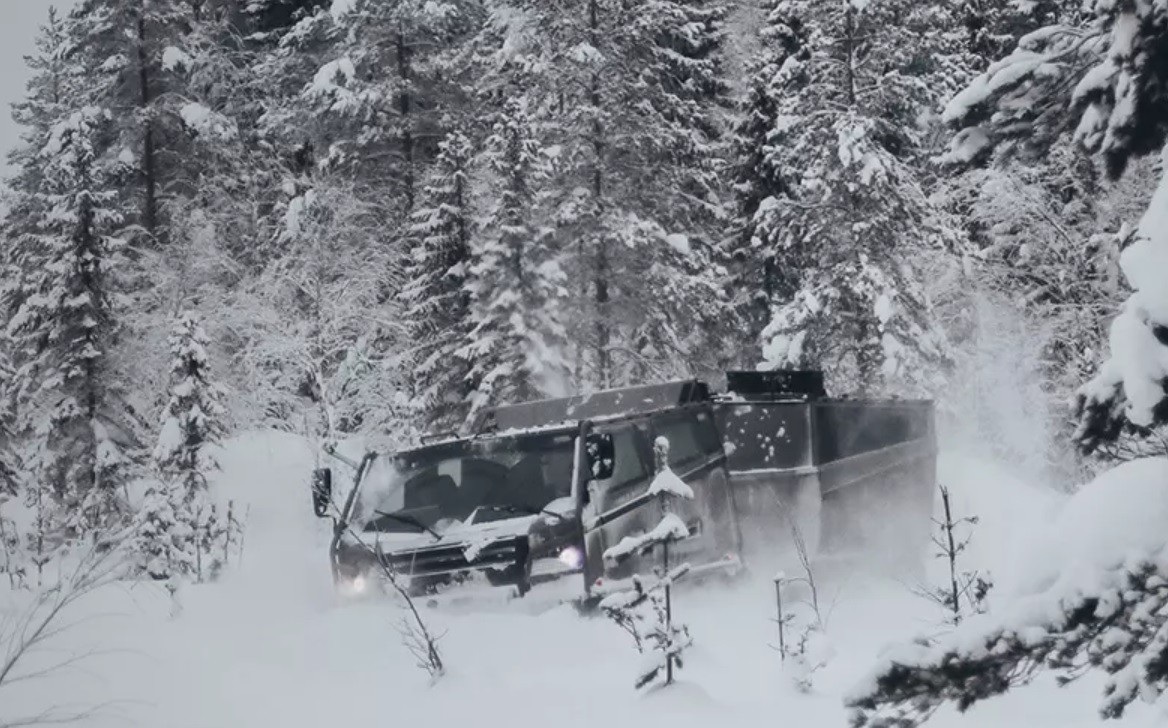
Indicative of the investments in Arctic security is the Army’s new Cold Weather All-Terrain Vehicle (CATV). The CATV will replace the current Stryker vehicles, as they have proven unsuitable for Arctic use and is designed to carry a combat-loaded infantry squad, perform medical evacuations, or serve as a mobile command and communications hub. The amphibious CATV can handle snow, ice, rock, sand, mud, swamps, and mountainous terrain, carry up to 8 tons of cargo - and includes heated personnel compartments with NATO-standard power take-off ports. (Photo: BAE Systems)
Better protective cold weather clothing and mobility support is great news for the Warfighter, but what about tactical electronics? Batteries and electronic systems need to meet current operational requirements for continuous, reliable power at temperatures down to -60°F (-51°C) – and this is a major challenge.
The standard approved operating temperatures for lithium-ion batteries are 32°F to 113°F (0°C to 45°C) for charging and 14°F to 140°F (-10°C to 60°C) for discharging - while their ideal storage temperature is no lower than 59°F (15°C). Extreme cold weather operations down to -60°F (-51°C) are therefore going to be a significant challenge for current batteries and electronics.
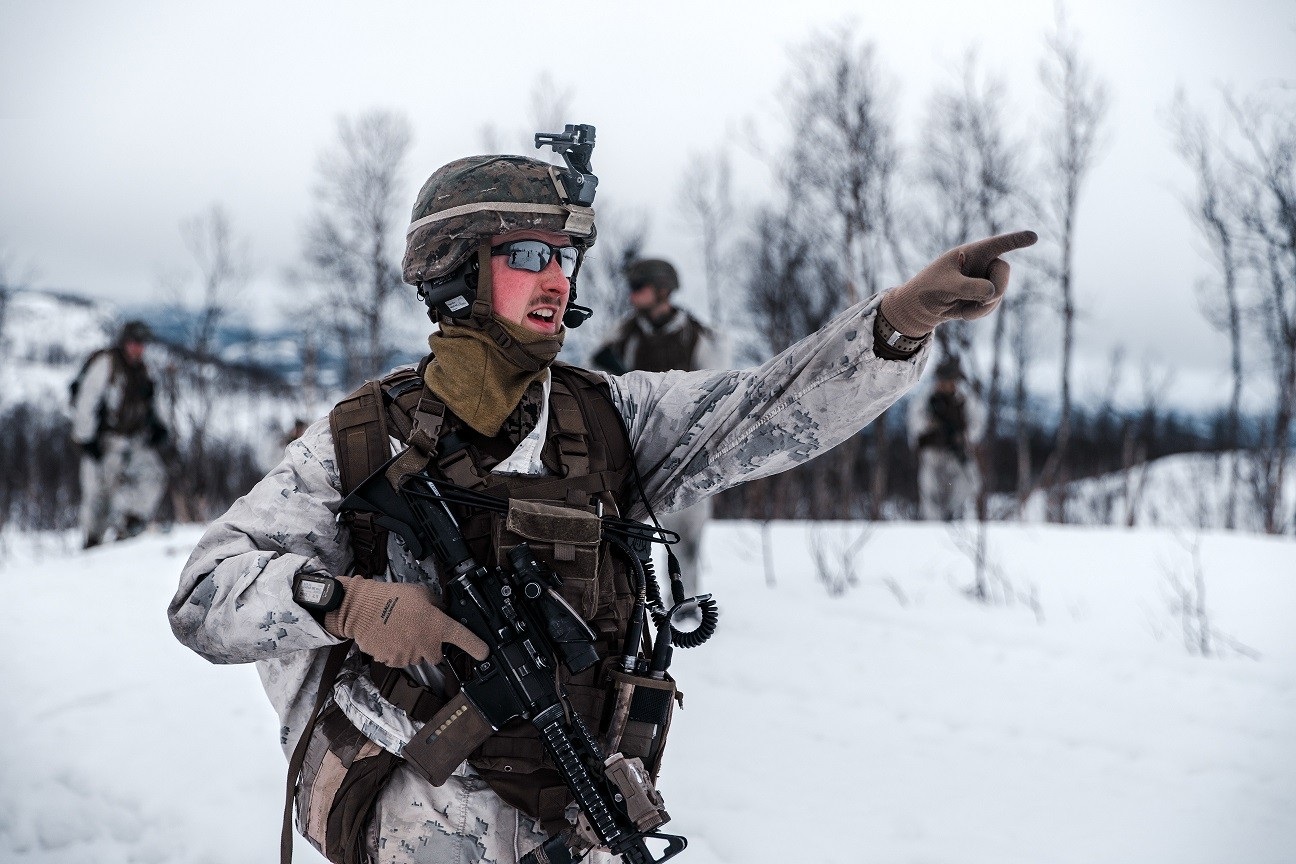
A U.S. Marine infantry leader issuing commands during Arctic training in Norway. This image illustrates the variety of battery-powered electronic devices in standard use now. (Photo: US Marine Corps)
When temperatures fall below freezing batteries don’t hold a charge as long, so they need to be charged more frequently. Additionally, if the battery’s internal temperature drops below 32°F, the lithium cells will be unable to charge – and what’s worse, the battery will be damaged by a chemical reaction called “Lithium Plating”. Batteries also have a prescribed lifespan with a certain number of charging cycles, so charging them more frequently will reduce their lifespan. To achieve the optimal lifespan of a battery, it is important to keep lithium-ion batteries within the operating range of 14°F to 140°F (-10°C to 60°C) during use, and it’s critical that they are charged at temperatures above 32°F (0°C).
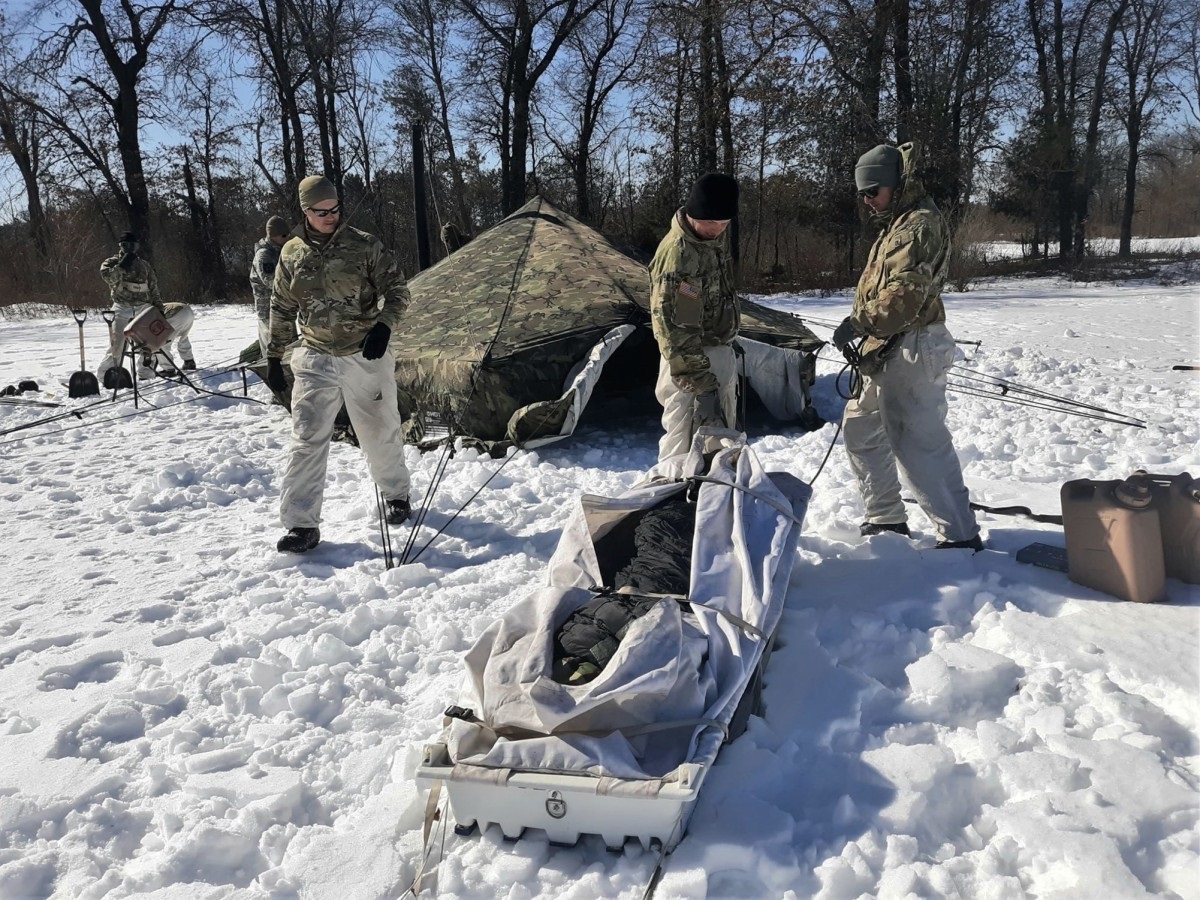
A squad of Soldiers participating in a Cold Weather Operations Course use an ahkio sled to carry their tent, fuel for their stove, and extra rations and ammunition. Placing a generator outside of the tent and using the warmth inside to bring batteries to a safe temperature is one way to charge batteries in the field. (Photo: US Army)
While the normal charging/discharging cycle ages a battery naturally, improper storage can cause a battery to age faster than it should. For this reason, Li-ion batteries should always be stored at 30-50% state of charge (SoC), and at temperatures between -20°C to 60°C (-4°F to 140°F). Storing at the cooler temperatures within this range will prolong battery life but storing below -20°C (-4°F) can actually cause some parts of the battery to crack and cause damage to the cells – rendering the battery unusable.
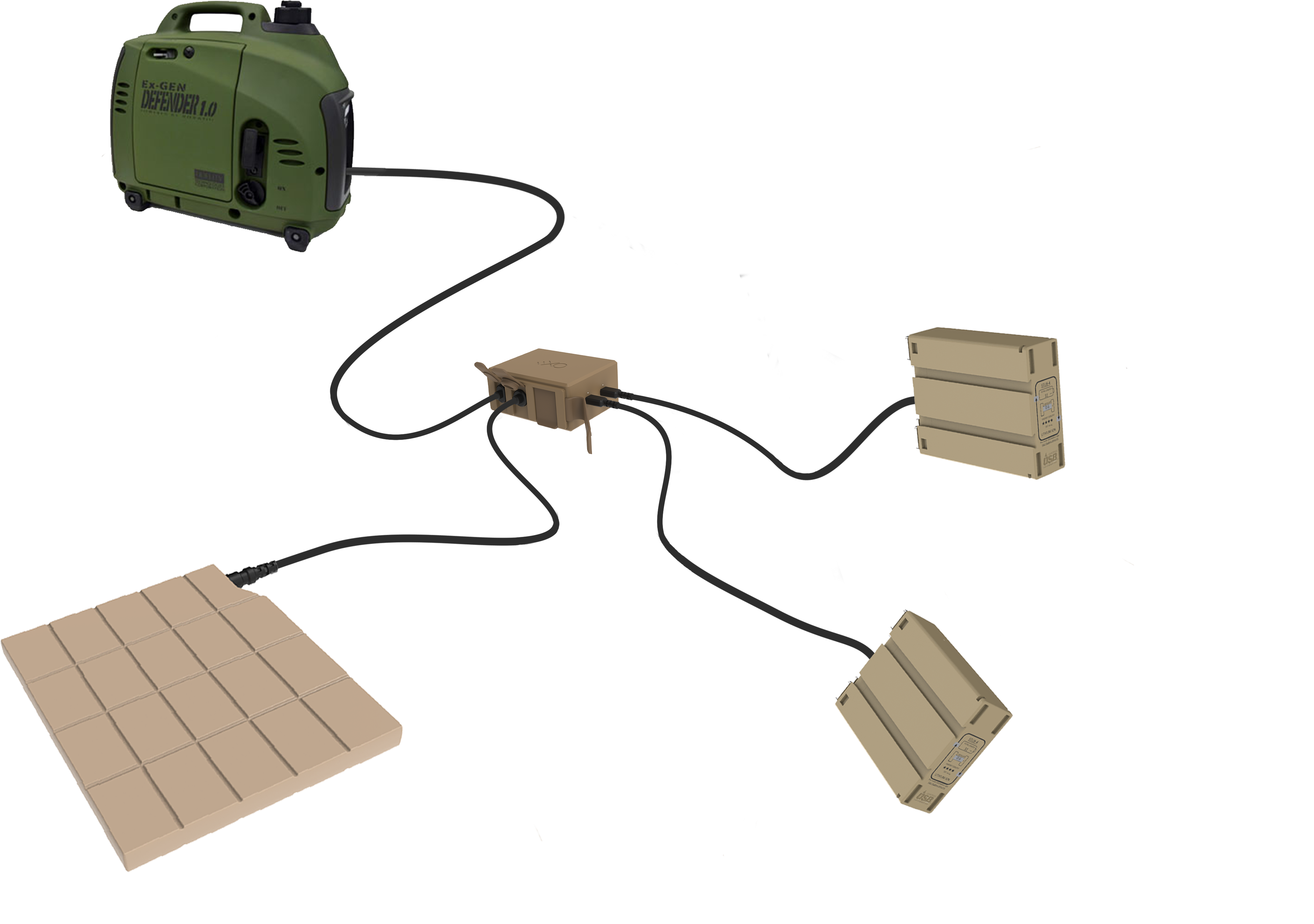
A conceptual illustration of the scenario described in the previous photo caption: a small portable generator outside a tent is connected to an EXO Charge Rugged Auxiliary Charger (RAC) inside the tent and is charging a CWB and 2 STUB batteries simultaneously. (Copyright: EXO Charge / Xentris Wireless)
Extreme cold weather capable batteries would be a true game changer for mission performance in Arctic / extreme cold weather operations. However, all the issues we’ve outlined above mean that most current battery systems are not good enough to meet the requirements of extreme cold weather operations.
At EXO Charge we are committed to working with the Army to investigate different technical approaches to the challenge of adapting lithium-ion batteries for safe and effective operation in the extremely cold conditions of the Arctic region.
____
By Lawrence Holsworth, EXO Charge Director of Marketing, and graduate of the US Army Northern Warfare Training Center's Infantry Winter Operations Course.